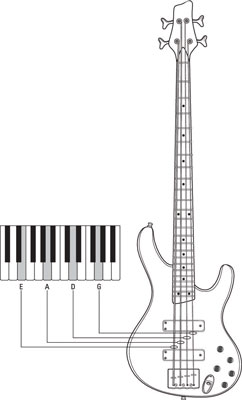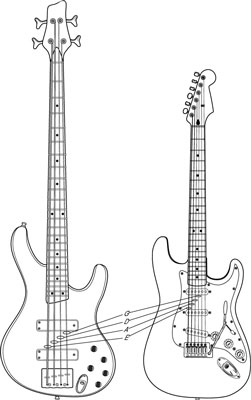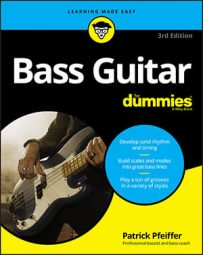When you play with other musicians, you need to get your bass in tune with their instruments. You can tune all your strings by comparing them individually with the appropriate note of the same pitch from an instrument that's already in tune, such as a piano.
However, you should consider getting just one string in tune with the reference pitch and then using your tuned string as a reference pitch for tuning your other strings. Here are two common reference-pitch sources.
A piano
Because the tuning of a piano is very stable, it serves as an excellent source for a reference pitch. You may find it easiest to use a reference pitch (on the piano) that's one octave higher than the note you want to tune on your string.

A guitar
The lowest (thickest) four strings of a guitar correspond to the four strings of your bass: Going from low to high (thick to thin), the strings are E, A, D, and G. Bear in mind that the guitar strings sound one octave higher than your bass strings. They're the same note, only higher.
Take a look to see which guitar strings correspond to your bass strings.


